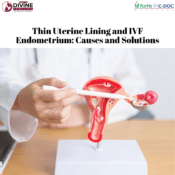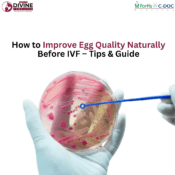

Infertility Treatment by PRP in IVF: A Revolutionary Approach
Introduction
Infertility can be an emotionally and physically challenging journey for couples trying to conceive. While traditional fertility treatments like in-vitro fertilization (IVF) have helped many achieve parenthood, not all cases see success in the first attempt. In recent years, Platelet-Rich Plasma (PRP) therapy has emerged as an innovative solution to enhance fertility outcomes. PRP therapy is gaining attention for its potential to improve endometrial receptivity, ovarian function, and overall IVF success rates.
In this comprehensive guide, we will explore how Infertility Treatment by PRP in IVF is transforming fertility care, who can benefit from it, the procedure, its success rates, and what you need to know before considering this treatment.
Overview of Infertility and the Role of Innovative Treatments
Infertility affects millions of couples worldwide, with numerous factors contributing to reproductive challenges. Some of the most common causes of infertility include:
- Hormonal imbalances
- Low ovarian reserve
- Poor egg quality
- Thin endometrium (uterine lining)
- Previous implantation failures
Traditional IVF methods can sometimes fall short in improving reproductive outcomes for women with these challenges. This is where advanced IVF techniques like PRP therapy come into play. By using the body's own growth factors, PRP therapy aids in regenerating and rejuvenating reproductive tissues, potentially improving IVF success rates.
Introduction to PRP (Platelet-Rich Plasma) Therapy in IVF
PRP therapy has been widely used in regenerative medicine, particularly in orthopedics, dermatology, and wound healing. Its application in fertility treatments is relatively new but promising. PRP in IVF works by stimulating tissue repair and increasing blood supply to the uterus and ovaries, creating a more favorable environment for embryo implantation and egg production.
How PRP is Revolutionizing Fertility Treatments
PRP therapy is changing the landscape of fertility treatments by:
- Enhancing endometrial receptivity for successful implantation
- Rejuvenating ovarian function in women with low ovarian reserve
- Potentially improving egg quality for better embryo development
- Providing a minimally invasive alternative to donor egg IVF
Many fertility clinics, including the Top 5 IVF Centres in Delhi, are now incorporating PRP therapy into their treatment protocols to improve IVF success rates.
What is PRP Therapy?
Definition and Process of Platelet-Rich Plasma (PRP)
PRP is a concentrated plasma solution derived from the patient's own blood, enriched with platelets that contain essential growth factors. These growth factors stimulate tissue regeneration and improve cell function.
How PRP is Derived from the Patient’s Own Blood
The PRP preparation process involves:
- Drawing a small amount of blood from the patient
- Spinning the blood in a centrifuge machine to separate platelet-rich plasma from red blood cells
- Extracting the PRP and preparing it for intrauterine or ovarian infusion
Benefits of PRP in Regenerative Medicine
- Stimulates cell growth and tissue repair
- Increases blood supply to targeted areas
- Improves healing and regeneration in the uterus and ovaries
Role of PRP in IVF Treatment
PRP plays a crucial role in enhancing fertility by addressing two major factors in IVF treatment:
1. PRP Enhances Endometrial Receptivity for Implantation
A thin endometrium can lead to implantation failure during IVF. PRP therapy helps thicken the uterine lining, improving its ability to support embryo implantation. PRP before embryo transfer has shown promising results in improving pregnancy rates.
2. PRP for Ovarian Rejuvenation in Low Ovarian Reserve Cases
Women with low ovarian reserve or premature ovarian aging often struggle with egg production. PRP therapy, when injected into the ovaries, may help stimulate ovarian activity, offering hope to women previously advised to consider donor eggs.
3. Improving Egg Quality and Ovarian Function
Poor egg quality is a common challenge in IVF failures. PRP therapy may help improve egg development, increasing the chances of successful fertilization and healthy embryo formation.
Who Can Benefit from PRP in IVF?
PRP therapy is ideal for:
- Women with thin endometrium or repeated implantation failures
- Patients with poor ovarian response in previous IVF cycles
- Women experiencing premature ovarian aging or menopause
The PRP Procedure in IVF
Step-by-Step Process of PRP Preparation and Administration
- Blood Collection – A small sample of the patient’s blood is drawn.
- Centrifugation – The blood is processed to separate the PRP.
- PRP Infusion – The PRP is injected into the uterus or ovaries using advanced techniques.
Techniques: Intrauterine PRP Infusion & Ovarian PRP Injection
- Intrauterine PRP infusion is used to improve endometrial thickness.
- Ovarian PRP injection is performed to rejuvenate ovarian function.
Timeline and Number of Sessions Required
- Typically, 1-3 sessions of PRP therapy are required, depending on individual cases.
Success Rates and Clinical Evidence
Studies and Research Supporting PRP in Fertility Treatment
Several studies indicate that PRP therapy enhances implantation rates and ovarian function. Clinics worldwide, including Top 10 IVF Centres in Delhi, are integrating PRP therapy into their IVF protocols.
Success Rates of PRP in Improving IVF Outcomes
- Women undergoing PRP before embryo transfer have shown improved pregnancy rates.
- PRP therapy has been linked to increased ovarian response in women with low ovarian reserve.
Patient Testimonials and Real-World Case Studies
Many couples have shared PRP IVF success stories, particularly those who previously faced implantation failure or poor ovarian response.
Risks and Safety Considerations
Potential Side Effects and Precautions
PRP therapy is considered safe as it uses the patient’s own blood, reducing the risk of rejection. However, minor side effects like temporary discomfort or mild cramping may occur.
Safety of PRP as an Autologous (Self-Derived) Treatment
Since PRP is autologous, there is no risk of allergic reactions or infections when performed by an experienced specialist.
Guidelines for Selecting a Qualified Fertility Clinic
Ensure you choose the Best IVF Clinic in Delhi with qualified fertility specialists experienced in PRP therapy.
Cost and Availability of PRP in IVF
Estimated Cost of PRP Therapy for Infertility
- The PRP IVF treatment cost varies between ₹25,000 – ₹60,000 per session in India.
Availability in Top Fertility Clinics
Many leading clinics, including Best IVF Centre in South Delhi and Best IVF Centre in Greater Kailash Delhi, offer PRP therapy.
Insurance and Financing Options
While PRP therapy is not typically covered by insurance, some clinics offer EMI or financing options for affordability.
FAQs on PRP for IVF
Common Questions About PRP Effectiveness and Safety
- Is PRP in IVF painful? – The procedure is minimally invasive and causes little to no pain.
- How long does it take to see results? – Benefits may be observed within a few weeks to months.
Contact & Consultation
If you’re considering Infertility Treatment by PRP in IVF, consult a qualified fertility specialist. Many Top 5 IVF Centre in Delhi offer online consultations to guide you through the process.
By integrating PRP therapy with IVF, couples struggling with infertility now have a new ray of hope in their journey towards parenthood.





